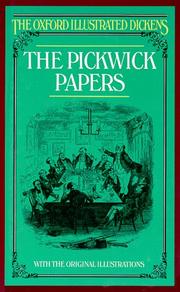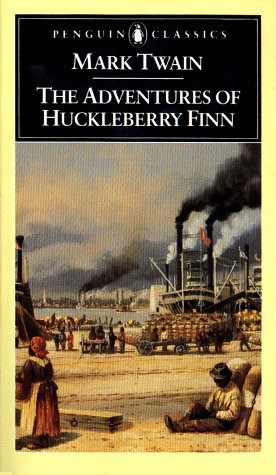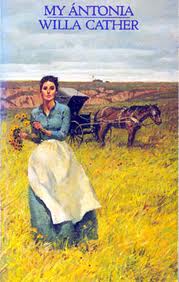|
Interesting
Reading for 2014
Charles Dickens -
The Pickwick Papers (1836)
|

|
The Posthumous
Papers of the Pickwick Club was the fictional
publication that really made the name of Charles Dickens famous.
After his reasonable success with descriptions and written
sketches of London life (Sketches by Boz) in 1833-36, Dickens
gained a popular following and the beginnings of a loyal
audience thanks to the increasing success of
The Pickwick Papers.
His publishers commissioned Dickens to
provide the text for a picture novel about unsuccessful,
bumbling sportsmen, with the pictures supplied by Robert
Seymour. But rather than wait to be given illustrations to
describe, Dickens began writing his descriptions before anything
had been drawn and so, increasingly through
The Pickwick Papers, his words
took precedence over the illustrations. Seymour, who had
originally proposed the idea of a series of illustrations of
city-dwellers inexpertly hunting etc., shot himself before the
second installment's publication – though that probably wasn't
just due to Dickens's increasing level of artistic control. |
The collection of illustrations and story-captions
detailing the exploits of the Pickwick Club eventually attracted a wide
readership, and it's easy to see why. While not quite the soap opera of its day,
The Pickwick Papers is a running light
comedy, with each installment dropping its increasingly familiar (dare I say
predictable?) characters into fresh situations full of potential mishaps and
fumbles.
Bill Ehlig and Ruby Payne
What Every Church Member Should Know about Poverty (1999)
|
 |
Churches often are perceived as open,
welcoming environments. Many times, that's what they are. But
congregations, without even realizing it, sometimes make
themselves inhospitable to impoverished people.
Many of us in the church genuinely want to
be available to those in their communities who are experiencing
poverty. However, churches are often operated with a
middle-class mentality. This middle-class mode of thought makes
it difficult for those from poverty to assimilate into the
congregation. In What Every Church
Member Should Know about Poverty, Payne, a national
expert on poverty, and Ehlig, an ordained minister, use stories
to help illustrate the way people from poverty view middle-class
churches. They then provide solutions and tactics to teach
church members and leaders some of the special considerations
that can be afforded the disadvantaged. One recommendation, for
example, is that congregations reach out to the poverty-stricken
in a way that shows mutual respect and not a sense of charity. |
Mark Twain - The Adventures of
Huckleberry Finn (1884)
|
 |
There's a reason
why many consider The Adventures of
Huckleberry Finn to be one of the great - if not the
greatest - American novel. It broke many of the literary rules
of its time and thus set the pattern for much of American
literature ever since. It's told in first-person dialect by a
great-hearted but ignorant bumpkin of a boy who understands far
less than the reader but who knows how to follow his heart over
his head. And it deals forthrightly, and scathingly, with
racism, the great American problem.
Those who attempt to ban this book (and it
is one of the most frequently challenged, year after year) can't
see the forest for the trees. They see the liberal use of the
"N"-word and assume it's racist, when in fact it's just the
opposite - it's a powerful, and powerfully moving, statement
against racism (as well as slavery, war, and a host of other
American problems). Despite its flawed final section, when Tom
Sawyer reappears and the author reverts to the style of that
lighthearted, lightweight book, this remains, more than 100
years after its publication, a book that every American could
profit from reading. |
Willa Cather - My Ántonia (1918)
|
 |
Willa Cather's best-known work,
My Ántonia, is a novel we
often first encounter as young adult literature, a book many of
us actually enjoyed in our youth. We feel comfortable leaving it
safely, fondly stored in our memory banks, rickety as they may
be, where it remains a humane story about a courageous Bohemian
immigrant girl forced by fate and family exigencies to grow up
on the beautiful, harsh flatlands of Nebraska.
We remember Jim Burden, who recounts
Antonia's adventures as well as those of his own rural childhood
with affection. We recall characters like the Russian friends,
Pavel and Peter, with haunted clarity. We feel enduring fondness
for Lena, the dressmaker. We still despise the evil money-lender
Wick Cutter. And scenes such as the one where Jim heroically -
at least to Antonia - bashes the head of a rattlesnake with his
spade remain with us, so startling were they when we first read
them. |
What's interesting about
My Ántonia is how it manages to function as a perfectly
inviting story for young readers, and how an adult willing to revisit it
with a more developed critical eye can appreciate it for the subtly
sophisticated narrative it truly is. In this regard, it's not unlike a
wildly different book, Alice in Wonderland. Great fun for kids,
psychologically captivating for grownups.
There are two things to note about the book: its wonderful
descriptions of the landscape and life on the frontier; and its capturing of the
emotions of the characters. You might say that
Cather captures the interior and exterior landscapes; the physical and emotional
terrain. This allows her to create – or perhaps recreate – a full and believable
world. This is one of the gifts of great literature: it allows us to see how
others might have lived; to imagine the possibilities and contours of life
outside of our own experiences.
|



